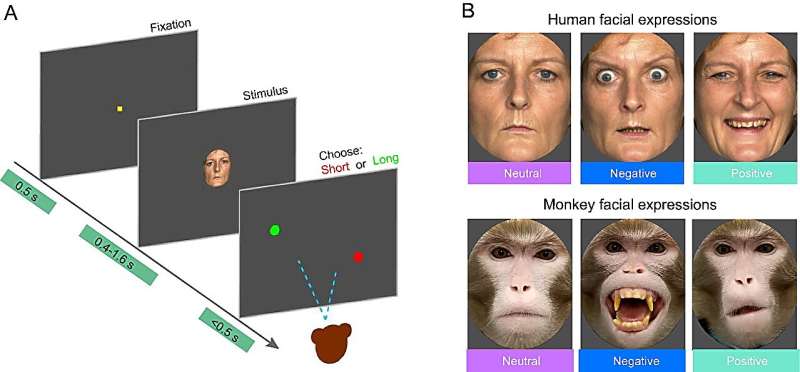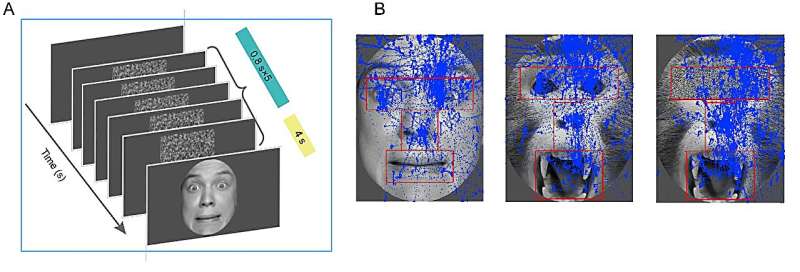This article has been reviewed according to Science X's editorial process and policies. Editors have highlighted the following attributes while ensuring the content's credibility:
fact-checked
trusted source
proofread
Study investigates monkeys' perception of emotions on viewing facial expressions

Being able to read others' affective states and intentions from facial expressions is crucial for social interaction. Nonhuman primates share the same ability as humans to express emotions via facial expressions, yet we are not sure whether monkeys can read emotions from the faces of other species (e.g., humans).
Recently, a research group led by Dr. Dai Ji from the Shenzhen Institute of Advanced Technology (SIAT) of the Chinese Academy of Sciences (CAS) has systematically investigated how monkeys perceive emotions from human faces and monkey faces with eye-tracking technology and sophisticated behavioral tasks, namely the temporal discrimination task (TDT) and the face scan task (FST).
The study was published in Zoological Research on Aug. 4.
In the TDT, monkeys were trained to determine the presenting duration (longer or shorter than 1 second) of human and monkey faces, which included three different expressions (positive, negative, neutral). From this behavioral paradigm, a subjective time perception curve could be built for each monkey.
The researchers found that monkeys showed prolonged subjective time perception in response to negative facial expressions in monkeys. In the meantime, pupil tracking revealed that monkey faces also reliably induced divergent pupil contraction in response to different expressions, while human faces and scrambled monkey faces did not.

In the FST, monkeys were trained to observe monkey and human faces freely. This experiment intended to uncover monkeys' scanning patterns on human or monkey faces. The results indicated that monkeys only displayed bias toward emotional expressions upon observing monkey faces. In addition, masking the eye region marginally decreased the viewing duration for monkey faces but not for human faces.
This study demonstrates that monkeys are more sensitive to facial expressions of conspecifics than those of humans.
"This unique experimental paradigm used in our study sheds new light on inter-species communication through facial expressions between nonhuman primates and humans," said Dr. Dai.
More information: Xin-He Liu et al, Probing the processing of facial expressions in monkeys via time perception and eye tracking, Zoological Research (2023). DOI: 10.24272/j.issn.2095-8137.2023.003
Provided by Chinese Academy of Sciences



















